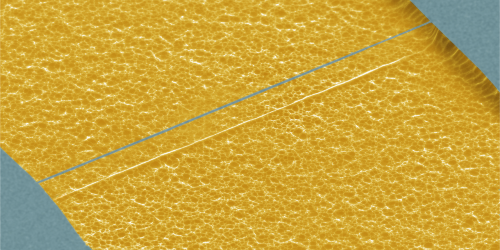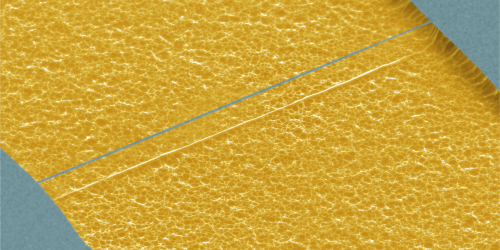A New Tool for Sensing Phonons in Liquid Helium
To probe the physical properties of quantum fluids, some researchers are turning to vibrating microscopic threads of material known as nanomechanical resonators. By dunking the resonators in the fluid and observing how the fluid damps the resonators’ oscillations, physicists hope to go fishing for quasiparticles or explore questions surrounding quantum turbulence and superfluidity. Now, Andrew Guthrie of Lancaster University in the UK and colleagues have taken nanoresonators where they’ve never gone before: liquid helium-4 cooled to a few thousandths of a degree above absolute zero. The resonators snagged collective oscillations in the fluid known as phonons in experiments that showcase the probe’s sensitivity.
To create their device, the team fabricated two thread-like beams, 30 and 150 long, out of a composite of silicon nitride and aluminum. The beams are like tiny suspension bridges—140 nm thick and suspended between two silicon pedestals. An alternating current in the beams and an external magnetic field cause the beams to vibrate. The team then submerged the beams in liquid helium-4 and measured how their oscillations changed as the helium was cooled from 3 K to 7 mK. As the temperature fell, the amplitude of the beam oscillations increased, which reflects a decrease in the number of phonons in the superfluid. While the phonon interactions were expected, the extent to which experiment and theory agree was remarkable, requiring no additional fitting parameters to match the data.
One of the team’s goals is to use this technology to “look inside” the superfluid structure, which requires beams that are thinner than the coherence length of the fluid. For helium-4, the beams would need to be just 0.1 nm thick, but the team is close to crafting 100-nm-thick beams that could probe superfluidity in helium-3.
This research is published in Physical Review B.
–Christopher Crockett
Christopher Crockett is a freelance writer based in Arlington, Virginia.





